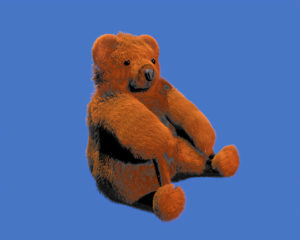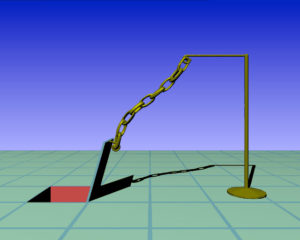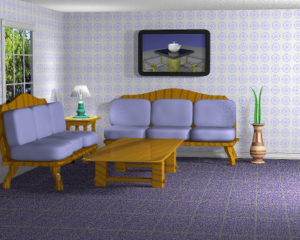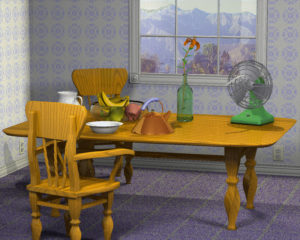Chapter 5: University research labs evolve
5.3 Cal Tech and North Carolina State

Cal Tech
The Computer Science Department at Cal Tech was started in 1976 by Robert Cannon, then U.S. Assistant Secretary of Transportation for Systems Development and Technology. He organized a search committee to recruit top faculty to the new department, and one of his first recruits was Ivan Sutherland (who was appointed as the Fletcher Jones Professor of Computer Science). Jim Kajiya was recruited by Sutherland in 1979, and they were later joined by Al Barr and Jim Blinn, who with Kajiya formed the core of the Cal Tech research group in computer graphics, which was probably the most mathematically sophisticated computer graphics group in the country. The group developed fundamental mathematical approaches for computationally simulated physical objects. Barr’s work in graphics was dedicated to creating a unified mathematical formalism for representing the shape and the behavior of objects. Kajiya was working toward connecting computer graphics principles to the basic equations of electromagnetism that govern the behavior of light. Blinn was recruited to Cal Tech as a half-time research fellow (later lecturer) by Sutherland. His primary interest was in the space program, and Blinn spent the other half of his time at the Jet Propulsion Laboratory producing animated simulations of the Voyager missions to Jupiter and Saturn.
Kajiya had a Utah PhD, but his fields of interest were very high-level programming languages, theoretical computer science, and signal processing. His interest in computer graphics began in 1981, after he presented a paper at the national SIGGRAPH conference on different ways of manipulating pixels (individual picture elements) to get a sharper image in the display of characters on CRT screens. Kajiya met Al Barr in the summer of 1983, when they were both speakers at the SIGGRAPH seminar on the state of the art in computer graphics. At that time Barr was senior research scientist at Raster Technologies, Inc. and was finishing his thesis at Rensselaer Polytechnic Institute. He was about to accept a faculty position at MIT, but Kajiya convinced him to come to Cal Tech instead.
Kajiya was also interested in anisotropic reflection, that is, reflection from surfaces such as cloth, hair, or fur. They worked on the mathematical methods used for the what Kajiya called the “fuzzy object problem”, the simulation of hair, fire, fabric, and splashing water, as well as simulating the shapes and appearance of plants and animals. The group also produced 4 out of the 19 contributions to the 1985 Omnimax film shown at SIGGRAPH 95. Barr animated a giant school of graceful sperm cells swimming toward a looming, “undulating egg cell”, and JPL’s Jeff Goldsmith, with software by Kajiya and Blinn, contributed a fly-by of Saturn. The third film was a sequence based on the constellations, with software written by Blinn. Kajiya, with computer science grad students Tim Kay and Brian Von Herzen, together with help from Art Center students, contributed a 30 second animation of a flight into a space colony (which just happened to house the Cal Tech campus).
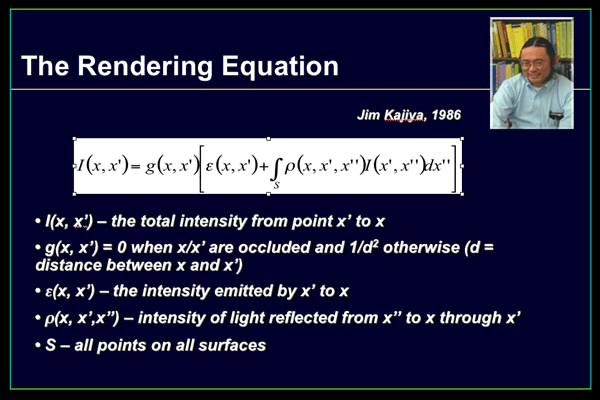
1986, Kajiya introduced the rendering equation as a way of modeling global illumination in an environment arising from the interplay of lights and surfaces. The rendering equation and its various forms have since formed the basis for physically-based rendering, enabling a new level of realism.

Other Cal Tech researchers besides Kay and Von Herzen included Andrew Witkin, David Kirk, Kurt Fleischer, Ronen Barzel, David Laidlaw, John Platt and others. Jim Kajiya received the ACM-SIGGRAPH Graphics Achievement Award in 1991 for an outstanding contribution to computer graphics and interactive effects. He and Tim Kay also received an Academy Award for Technical Achievement in 1996 for their work in generating fur and hair for motion pictures. A list of publications out of the Cal Tech Graphics group can be found at http://www.gg.caltech.edu/publications.html
Cal Tech was one of five universities (Brown, UNC, Utah, Cornell, and Cal Tech) across the country that were part of the NSF funded Graphics and Visualization Center, founded in 1991. It was one of 24 National Science Foundation Science and Technology Centers created to pursue foundational interdisciplinary research. The primary goals of the Center were to build a stronger scientific foundation for computer graphics and scientific visualization and to help create the basic framework for future interactive graphical environments (see section 5 in this chapter.)
Research Areas
The Cal Tech Computer Graphics Group pursued research in four main areas of computer graphics, with a focus on the mathematical foundations of CG: modeling, rendering, user interfaces and high-performance architectures. Two driving application areas helped direct this research: scientific visualization and telecollaboration in virtual environments. Center researchers developed new rendering algorithms based on the physics of light, new physically-based models, sophisticated mathematics for 3D surface definition, new parallel display architectures, easier-to-use 3D user interfaces for individual and collaborative work on the desktop and in virtual environments, and new techniques for scientific visualization.
Books (*) and selected publications
*Barzel, Ronen. Physically-Based Modeling for Computer Graphics: A Structured Approach. San Diego: Academic Press, 1992. Abstract is available
*House, Donald and David Breen, eds. Cloth Modeling and Animation. Natick, MA: AK Peters, 2000. (AK Peters is now part of CRC Press)
*Kirk, David, ed. Graphics Gems III. San Diego: Academic Press, 1992.
*Snyder, John M. Generative Modeling for Computer Graphics and CAD: Symbolic Shape Design Using Interval Analysis. San Diego: Academic Press, 1992. Abstract is available.
Kajiya, James T., “The rendering equation,” in Proceedings of SIGGRAPH 1986, ACM SIGGRAPH, 1986, pp. 143-150.
Witkin, Andrew, Kurt Fleischer and Alan H. Barr, “Energy constraints on parameterized models,” in Proceedings of SIGGRAPH 1987, ACM SIGGRAPH, 1987, pp. 225-232.
Terzopoulos, Demetri, John Platt, Alan H. Barr and Kurt Fleischer, “Elastically deformable models,” in Proceedings of SIGGRAPH 1987, ACM SIGGRAPH, 1987, pp. 205-214.
Barzel, Ronen and Alan H. Barr, “A modeling system based on dynamic constraints,” in Proceedings of SIGGRAPH 1988, ACM SIGGRAPH, 1988, pp. 179-188.
Snyder, John M., “Interval analysis for computer graphics,” in Proceedings of SIGGRAPH 1992, ACM SIGGRAPH, 1992, pp. 121-130. Abstract is available.
Snyder, John M. and James T. Kajiya, “Generative modeling: a symbolic system for geometric modeling,”, in Proceedings of SIGGRAPH 1992, ACM SIGGRAPH, 1992, pp. 369-378. Abstract is available.
Fleischer, Kurt W., Bena Currin, David H. Laidlaw and Alan H. Barr, “Cellular texture generation,” in Proceedings of SIGGRAPH 1995, ACM SIGGRAPH, 1995, pp. 239-248.
Greenberg, Donald, Kenneth Torrance, Peter Shirley, James Arvo, et al., “A framework for realistic image synthesis,” in Proceedings of SIGGRAPH 1997, ACM SIGGRAPH, 1997, pp. 477-494.
North Carolina State University
The graphics program at North Carolina State University was relatively short-lived, but the investigations that were conducted there had long term impact on the discipline. Prof. John Staudhammer (later with the Graphics Symbolic and Geometric Computation Program at NSF) created the research group in the Electrical Engineering Department around 1970. Students included Turner Whitted, Nick England, Mary Whitton, Jeff Eastman, Marc Howard, Ed Tripp and others. They had some success with research publications, and developed some lasting hardware configurations.
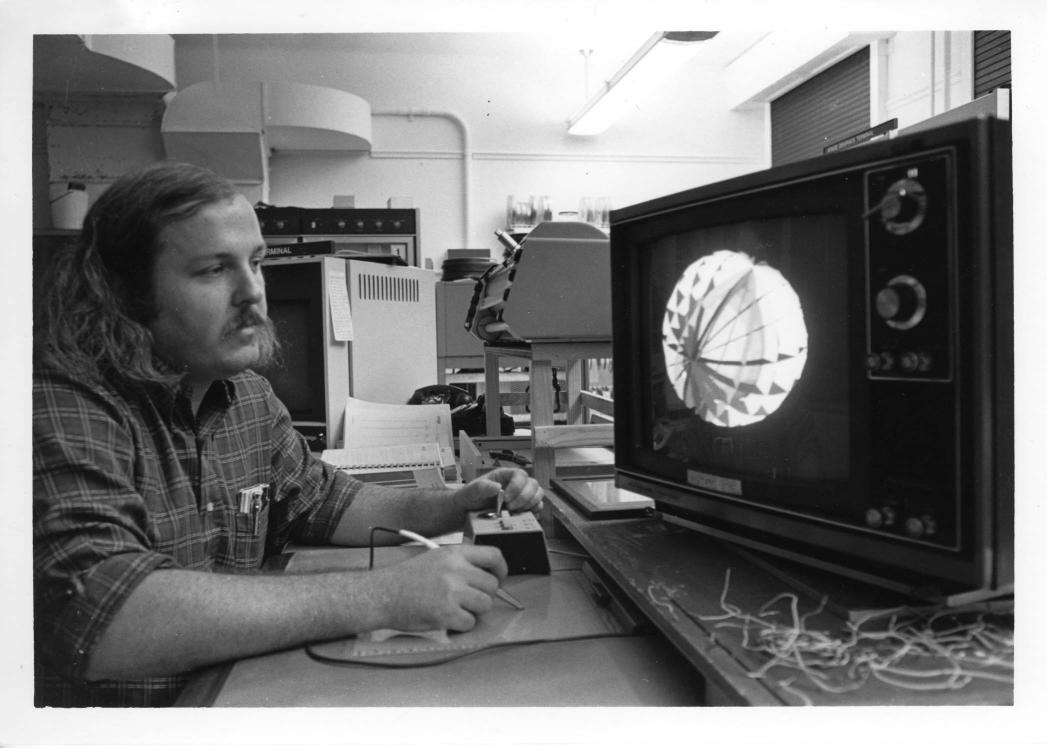
Eastman, Dave Wooten, and Tripp designed a very fast asynchronous parallel processor for graphics operations, and England designed and built the fore-runner to the Ikonas system, a programmable 32-bit graphics processor (based on AMD 2901) and a frame buffer (512x512x2 or 256x256x8), which was published in a paper at SIGGRAPH 78.
Staudhammer formed a company called Digitec and built the real-time playback run-length encoded frame buffer for the CGRG at Ohio State, and Whitton and England started Ikonas Graphics Systems based on the England’s programmable raster display processor.
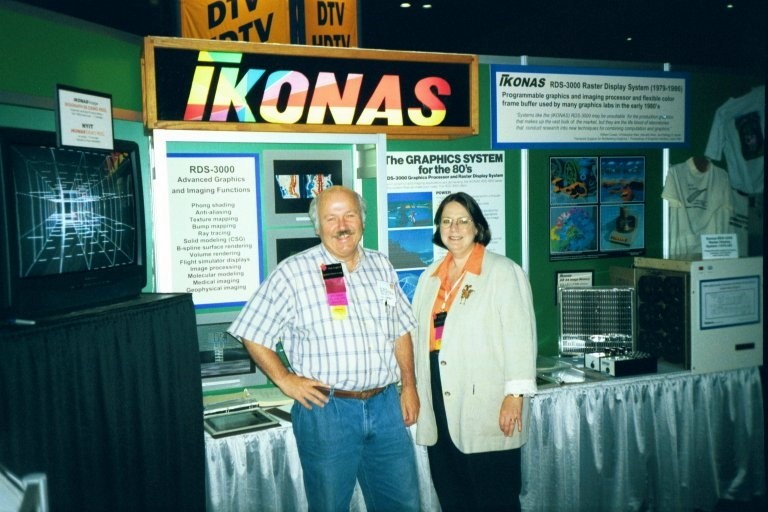
After receiving his PhD from NCSU in 1978, Turner Whitted left for Bell Labs and proceeded to impact the CGI world with an algorithm that could ray-trace a scene in a reasonable amount of time. His film, The Compleat Angler is one of the most mimicked pieces of CGI work ever, as nearly every student that enters the discipline tries to generate a bouncing ray-traced ball sequence. Whitted was also very instrumental in the development of various scan line algorithms, as well as approaches to organizing geometric data for fast rendering.
In 1983, Whitted left Bell Labs to return to North Carolina to establish Numerical Designs, Ltd. (later part of Emergent Game Technologies) in Chapel Hill. NDL was founded with Robert Whitton of Ikonas to develop graphics toolkits for 3D CGI. Key developments of NDL included
- NetImmerse 3D Game Engine
- MAXImmerse 3D Studio MAX Plug-in
- PLUS Photorealistic Rendering Software
Whitted also had a faculty appointment at UNC, and in 1997 joined the graphics division at Microsoft. He was appointed an ACM Fellow, and received the 1986 SIGGRAPH Graphics Achievement award for his simple and elegant algorithm for ray-tracing. He became the lead contact for the Graphics group and the Hardware Devices group at Microsoft, where he investigated alternative user interface devices, such as wearable interfaces.
Movie 5.9 NC State graphics
Early computer graphics at NC State University Signal Processing Lab – circa 1973
https://www.youtube.com/watch?v=4MHzU4xJ4pk
1984 article about Computer Graphics at Cal Tech
https://ohiostate.pressbooks.pub/app/uploads/sites/45/2017/09/caltech-graphics1984.pdf
An extensive list of Cal Tech books and publications can be found online at
http://www.gg.caltech.edu/publications.html
For more information about the early work at NCSU, see Nick England’s NCSU page.
Gallery 5.3 Images from Cal Tech
- Herbert the Bear with 3D textures
- Pandora’s Chain – Al Barr – CalTech
- Living room – lighting and shadows
- Generative modeling (Image appears on the cover of John Snyder’s book)
- Fleischer – Developmental modeling
